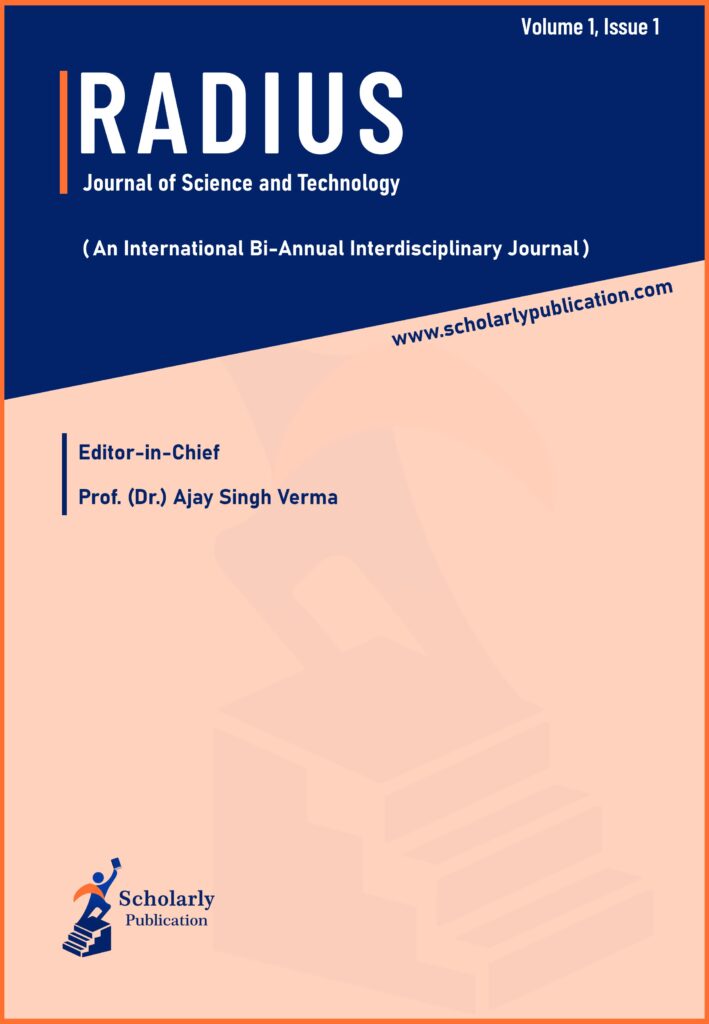Comprehensive Review of Power Electronic DC-DC Converters in Electric Vehicle Applications
Volume 1, Issue 1, Article Number: 241005 (2024)
aDepartment of Electrical Engineering, Anand International College of Engineering, Jaipur – 303012, India
bDepartment of Electronics and Communication Engineering, JECRC University, Jaipur – 303905, India
*Corresponding Author: ukgupta2001@gmail.com
Received: 28 September 2024 | Revised: 18 October 2024
Accepted: 22 October 2024 | Published Online: 27 October 2024
© The Author(s), under exclusive license to Scholarly Publication
Abstract
The rapid rise of electric vehicles (EVs) presents a sustainable alternative to traditional internal combustion engine (ICE) vehicles, significantly reducing greenhouse gas emissions and improving overall vehicle efficiency. This paper investigates the critical role of power electronic converters, especially DC-DC converters, within EV powertrains. Emphasizing the necessity of achieving appropriate voltage levels for battery and motor operation, it explores conventional and advanced DC-DC converter topologies, including the conventional boost converter (BC) and the interleaved four-phase boost converter (IBC). Additionally, the paper highlights the growing importance of wide bandgap semiconductors (WBGSs) such as silicon carbide (SiC) and gallium nitride (GaN) in enhancing converter performance by enabling higher switching frequencies, improved thermal operation, and reduced losses. Through a comprehensive analysis, the study reveals the potential of WBGSs to improve the efficiency and reliability of EV charging systems, power converters, and electric motors, making them crucial for future EV advancements. This work aims to underline the importance of power electronic converter design and control in shaping the future of electric vehicles.
Keywords
Transportation electrification; Electric vehicles; Power converters; Third harmonic injection; Multi-level inverter
References
- Poorfakhraei, A., Narimani, M., & Emadi, A. (2021). A review of multilevel inverter topologies in electric vehicles: Current status and future trends. IEEE Open Journal of Power Electronics, 2, 155-170.
[View Article] [Google Scholar]
- Xu, S., Guo, Y., & Su, W. (2014). A proof-of-concept demonstration for the transportation electrification education. In 2014 IEEE Conference and Expo Transportation Electrification Asia-Pacific (ITEC Asia-Pacific), IEEE, 1-5.
[View Article] [Google Scholar]
- Meintz, A., Zhang, J., Vijayagopal, R., Kreutzer, C., Ahmed, S., Bloom, I., … & Tanim, T. (2017). Enabling fast charging–Vehicle considerations. Journal of Power Sources, 367, 216-227.
[View Article] [Google Scholar]
- Ronanki, D., Kelkar, A., & Williamson, S. S. (2019). Extreme fast charging technology—Prospects to enhance sustainable electric transportation. Energies, 12, 3721.
[View Article] [Google Scholar]
- Lipu, M. S. H., Mamun, A. A., Ansari, S., Miah, M. S., Hasan, K., Meraj, S. T., … & Tan, N. M. (2022). Battery management, key technologies, methods, issues, and future trends of electric vehicles: A pathway toward achieving sustainable development goals. Batteries, 8, 119.
[View Article] [Google Scholar]
- Ahmad, A., Alam, M. S., & Chabaan, R. (2017). A comprehensive review of wireless charging technologies for electric vehicles. IEEE Transactions on Transportation Electrification, 4, 38-63.
[View Article] [Google Scholar]
- Bradley, T. H., & Frank, A. A. (2009). Design, demonstrations and sustainability impact assessments for plug-in hybrid electric vehicles. Renewable and Sustainable Energy Reviews, 13, 115-128.
[View Article] [Google Scholar]
- Emadi, A., Lee, Y. J., & Rajashekara, K. (2008). Power electronics and motor drives in electric, hybrid electric, and plug-in hybrid electric vehicles. IEEE Transactions on Industrial Electronics, 55, 2237-2245.
[View Article] [Google Scholar]
- Ehsani, M., Gao, Y., & Miller, J. M. (2007). Hybrid electric vehicles: Architecture and motor drives. Proceedings of the IEEE, 95, 719-728.
[View Article] [Google Scholar]
- Quinn, C., Zimmerle, D., & Bradley, T. H. (2010). The effect of communication architecture on the availability, reliability, and economics of plug-in hybrid electric vehicle-to-grid ancillary services. Journal of Power Sources, 195, 1500-1509.
[View Article] [Google Scholar]
- Reimers, J., Dorn-Gomba, L., Mak, C., & Emadi, A. (2019). Automotive traction inverters: Current status and future trends. IEEE Transactions on Vehicular Technology, 68, 3337-3350.
[View Article] [Google Scholar]
- Wang, H., Hasanzadeh, A., & Khaligh, A. (2013). Transportation Electrification: Conductive charging of electrified vehicles. IEEE Electrification Magazine, 1, 46-58.
[View Article] [Google Scholar]
- Tanimoto, S., & Matsui, K. (2014). High junction temperature and low parasitic inductance power module technology for compact power conversion systems. IEEE Transactions on Electron Devices, 62, 258-269.
[View Article] [Google Scholar]
- Bosshard, R., & Kolar, J. W. (2016). Multi-objective optimization of 50 kW/85 kHz IPT system for public transport. IEEE Journal of Emerging and Selected Topics in Power Electronics, 4, 1370-1382.
[View Article] [Google Scholar]
- Tritschler, J., Reichert, S., & Goeldi, B. (2014). A practical investigation of a high power, bidirectional charging system for electric vehicles. In 2014 16th European Conference on Power Electronics and Applications, IEEE, 1-7.
[View Article] [Google Scholar]
- Galigekere, V. P., Pries, J., Onar, O. C., Su, G. J., Anwar, S., Wiles, R., … & Wilkins, J. (2018). Design and implementation of an optimized 100 kW stationary wireless charging system for EV battery recharging. In 2018 IEEE Energy Conversion Congress and Exposition (ECCE), IEEE, 3587-3592.
[View Article] [Google Scholar]
- Czyz, P., Reinke, A., Cichowski, A., & Sleszynski, W. (2016). Performance comparison of a 650 V GaN SSFET and CoolMOS. In 2016 10th International Conference on Compatibility, Power Electronics and Power Engineering (CPE-POWERENG), IEEE, 438-443.
[View Article] [Google Scholar]
- Bertelshofer, T., Horff, R., Maerz, A., & Bakran, M. M. (2016). A performance comparison of a 650 V Si IGBT and SiC MOSFET inverter under automotive conditions. In PCIM Europe 2016; International Exhibition and Conference for Power Electronics, Intelligent Motion, Renewable Energy and Energy Management, Nuremberg, Germany, VDE, 1-8. Print ISBN: 978-3-8007-4186-1
[View Chapter] [Google Scholar]
- Lee, W., Li, S., Han, D., Sarlioglu, B., Minav, T. A., & Pietola, M. (2018). A review of integrated motor drive and wide-bandgap power electronics for high-performance electro-hydrostatic actuators. IEEE Transactions on Transportation Electrification, 4, 684-693.
[View Article] [Google Scholar]
- Millan, J., Godignon, P., Perpiñà, X., Pérez-Tomás, A., & Rebollo, J. (2013). A survey of wide bandgap power semiconductor devices. IEEE transactions on Power Electronics, 29, 2155-2163.
[View Article] [Google Scholar]
- Forouzesh, M., Siwakoti, Y. P., Gorji, S. A., Blaabjerg, F., & Lehman, B. (2017). Step-up DC-DC converters: a comprehensive review of voltage-boosting techniques, topologies, and applications. IEEE Transactions on Power Electronics, 3, 9143-9178.
[View Article] [Google Scholar]
- Corcau, J. I., & Dinca, L. (2014). Experimental tests regarding the functionality of a DC to DC Boost Converter. In 2014 International Symposium on Power Electronics, Electrical Drives, Automation and Motion, IEEE, 579-582.
[View Article] [Google Scholar]
- Al Sakka, M., Van Mierlo, J., Gualous, H., & Brussel, U. (2011). Chapter – 13, DC/DC converters for electric vehicles, In: Soylu S. (ed) Electric Vehicles-Modelling and Simulations, Intech, 309-332.
- Seo, S. W., & Choi, H. H. (2019). Digital implementation of fractional order PID-type controller for boost DC-DC converter. IEEE Access, 7, 142652-142662.
[View Article] [Google Scholar]
- Di Bernardo, M., & Vasca, F. (2000). Discrete-time maps for the analysis of bifurcations and chaos in DC/DC converters. IEEE Transactions on Circuits and Systems I: Fundamental Theory and Applications, 47, 130-143.
[View Article] [Google Scholar]
- Cafagna, D., & Grassi, G. (2006). Bifurcation analysis and chaotic behavior in boost converters: experimental results. Nonlinear Dynamics, 44, 251-262.
[View Article] [Google Scholar]
- Rajashekara, K. (2003). Power conversion and control strategies for fuel cell vehicles. In IECON’03, 29th Annual Conference of the IEEE Industrial Electronics Society (IEEE Cat. No. 03CH37468), IEEE, 3, 2865-2870.
[View Article] [Google Scholar]
- Kong, X., Choi, L. T., & Khambadkone, A. M. (2004). Analysis and control of isolated current-fed full bridge converter in fuel cell system. In 30th Annual Conference of IEEE Industrial Electronics Society, 2004. IECON 2004, IEEE, 3, 2825-2830.
[View Article] [Google Scholar]
- Islam, R., Rafin, S. S. H., & Mohammed, O. A. (2022). Comprehensive review of power electronic converters in electric vehicle applications. Forecasting, 5, 22-80.
[View Article] [Google Scholar]
- Yazici, İ., & Yaylaci, E. K. (2016). Fast and robust voltage control of DC-DC boost converter by using fast terminal sliding mode controller. IET Power Electronics, 9, 120-125.
[View Article] [Google Scholar]
- Cheng, L., Acuna, P., Aguilera, R. P., Jiang, J., Wei, S., Fletcher, J. E., & Lu, D. D. (2017). Model predictive control for DC-DC boost converters with reduced-prediction horizon and constant switching frequency. IEEE Transactions on Power Electronics, 33, 9064-9075.
[View Article] [Google Scholar]
- Mardani, M. M., Khooban, M. H., Masoudian, A., & Dragičević, T. (2018). Model predictive control of DC-DC converters to mitigate the effects of pulsed power loads in naval DC microgrids. IEEE Transactions on Industrial Electronics, 66, 5676-5685.
[View Article] [Google Scholar]
- Chakraborty, S., Vu, H. N., Hasan, M. M., Tran, D. D., Baghdadi, M. E., & Hegazy, O. (2019). DC-DC converter topologies for electric vehicles, plug-in hybrid electric vehicles and fast charging stations: State of the art and future trends. Energies, 12, 1569.
[View Article] [Google Scholar]
- Zhang, X., Bai, H., & Zhou, X. (2016). Soft switching DC-DC converter control using FBLSMC and frequency modulation in HESS based electric vehicle. In 2016 IEEE 8th International Power Electronics and Motion Control Conference (IPEMC-ECCE Asia), IEEE, 2209-2213.
[View Article] [Google Scholar]
- Lin, B. R., & Chao, C. H. (2012). Soft-switching converter with two series half-bridge legs to reduce voltage stress of active switches. IEEE Transactions on Industrial Electronics, 60, 2214-2224.
[View Article] [Google Scholar]
- Varshney, A., Kumar, R., Kuanr, D., & Gupta, M. (2014). Soft-Switched Boost DC-DC Converter System for Electric Vehicles using An Auxiliary Resonant Circuit. Inter. J. Emerg. Technol. Adv. Eng, 4, 845-850.
[View Article] [Google Scholar]
- Ma, R., Xu, L., Xie, R., Zhao, D., Huangfu, Y., & Gao, F. (2019). Advanced robustness control of DC-DC converter for proton exchange membrane fuel cell applications. IEEE Transactions on Industry Applications, 55, 6389-6400.
[View Article] [Google Scholar]
- , Li, Y., Zhang, W., Wang, N., & Xue, W. (2014). Active disturbance rejection control for a flywheel energy storage system. IEEE Transactions on Industrial Electronics, 62, 991-1001.
[View Article] [Google Scholar]
- Cid-Pastor, A., Giral, R., Calvente, J., Utkin, V. I., & Martinez-Salamero, L. (2011). Interleaved converters based on sliding-mode control in a ring configuration. IEEE Transactions on Circuits and Systems I: Regular Papers, 58, 2566-2577.
[View Article] [Google Scholar]
- Saadi, R., Bahri, M., Ayad, M. Y., Becherif, M., Kraa, O., & Aboubou, A. (2014). Implementation and dual loop control of two phases interleaved boost converter for fuel cell applications. In 3rd International Symposium on Environmental Friendly Energies and Applications (EFEA), IEEE, 1-7.
Cite This Article
A. K. Bhargava, U. K. Gupta, M. Rani, and Ajit, “Comprehensive Review of Power Electronic DC-DC Converters in Electric Vehicle Applications,” Radius: Journal of Science and Technology 1(1) (2024) 241005.
Rights & Permission
Authors retain copyright of their research articles in this journal, which are published under a Creative Commons Attribution 4.0 (CC-BY) International License, allowing broad dissemination and reuse, including commercial use, provided proper credit is given. The publisher holds exclusive rights to publish, distribute, and grant permissions, including for commercial use, ensure the article’s compatibility with future technologies, and enforce rights against third parties, such as in cases of plagiarism or copyright infringement.

